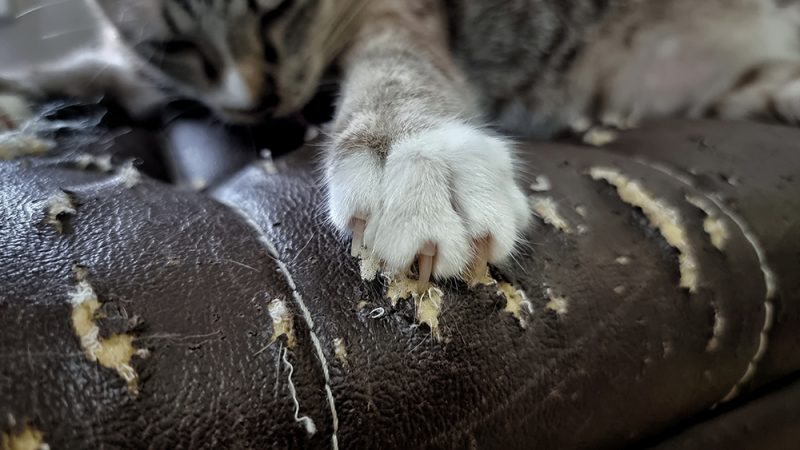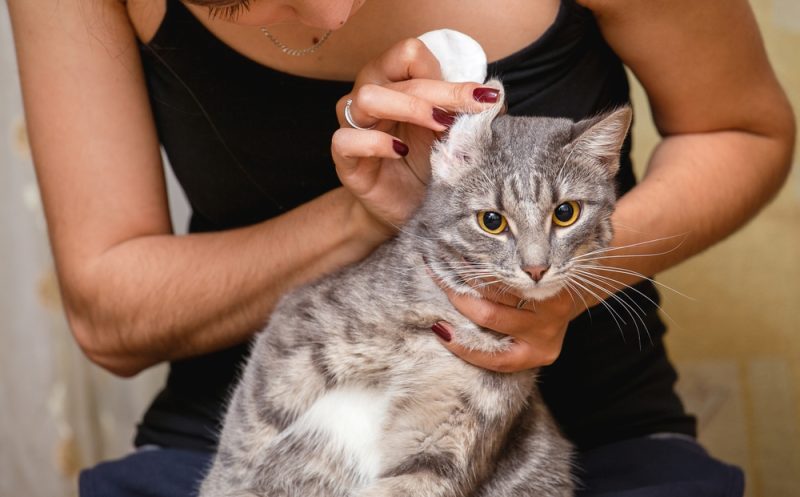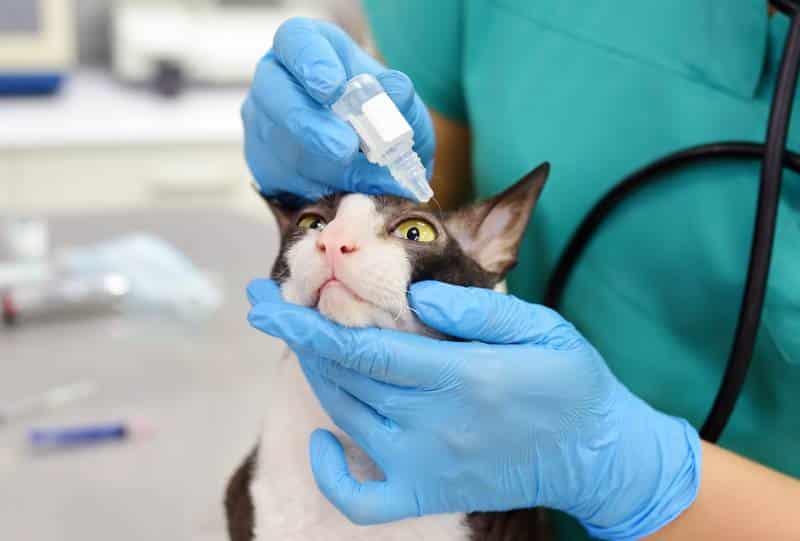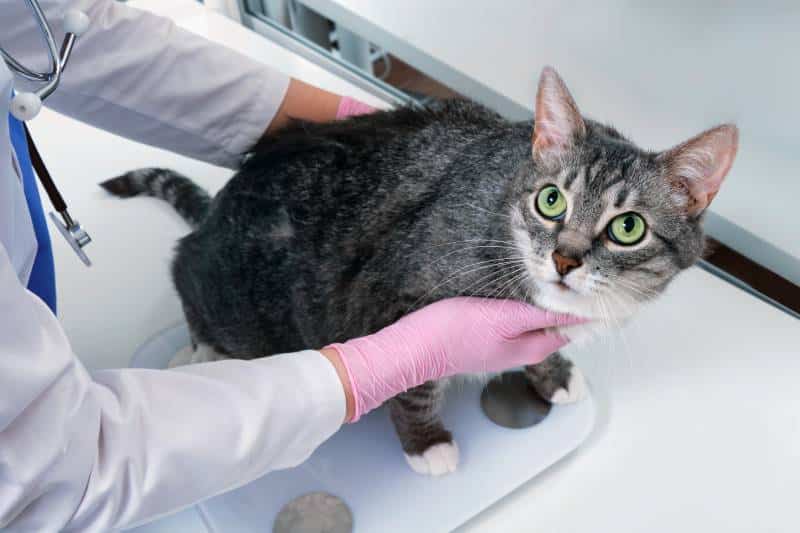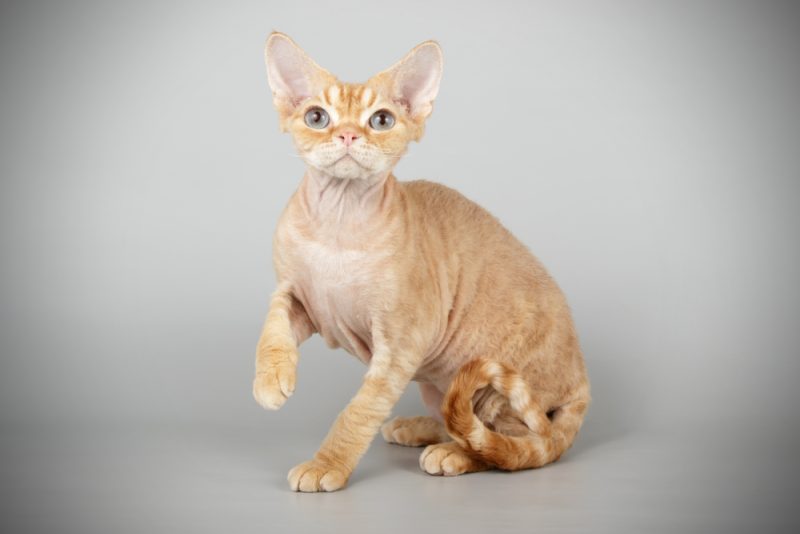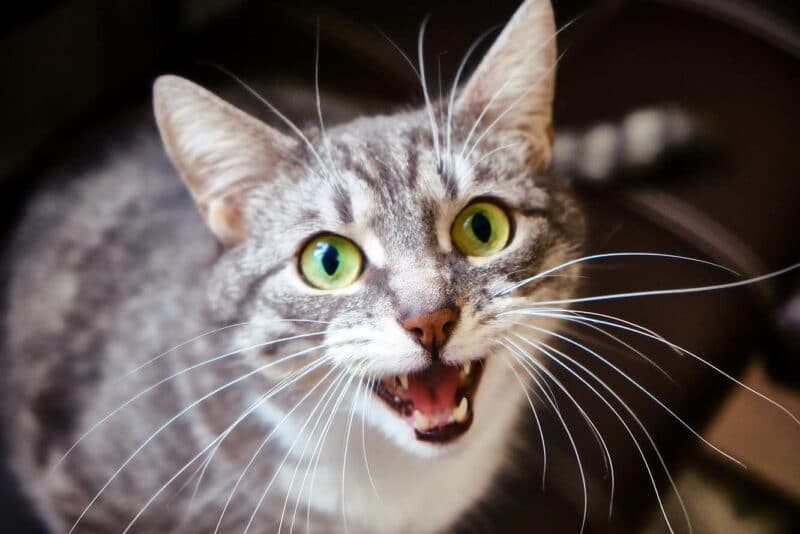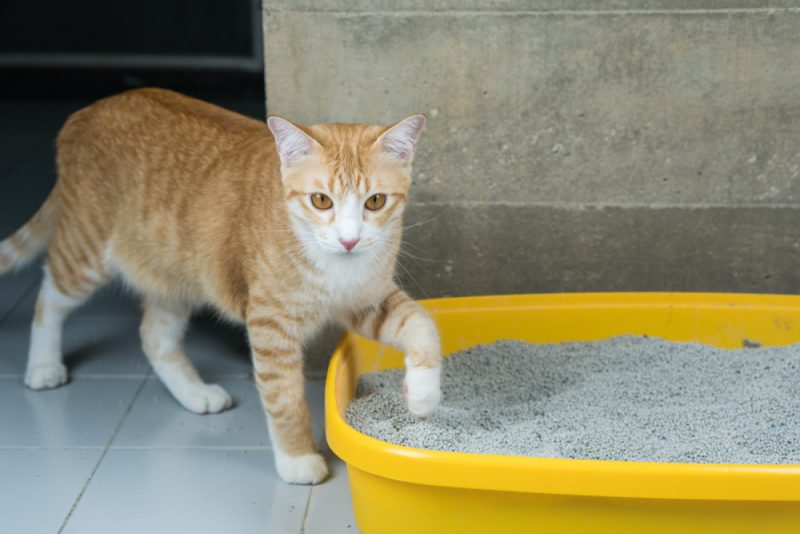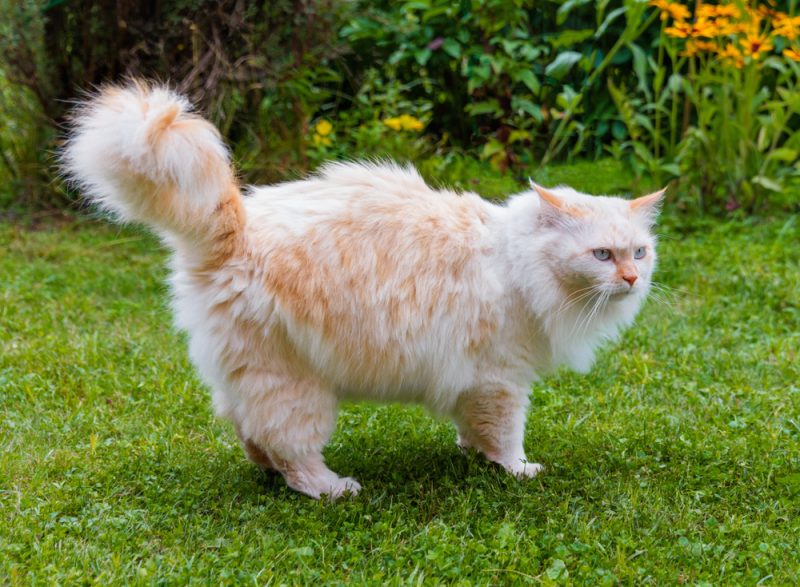In this article
Of course, you love your cat, but that doesn’t mean you love all of their behaviors–especially the more destructive ones. If your cat has taken a liking to scratching and clawing your leather furniture, you may feel at your wit’s end with their antics.
Thankfully, there are ways that you can stop cats from shredding your furniture. In this article, we will discuss the dos and don’ts of preventing your cat from scratching and clawing furniture with 6 expert tips. We’ll also discuss why cats love to scratch things so much so you can have a better understanding of your cat’s behavior and natural instincts.

What You Need to Know About Why Cats Scratch Furniture
While it may seem like your cat is mischievous or even vindictive by scratching your furniture, this couldn’t be further from the truth. In reality, your cat is engaging in a normal, healthy, instinctual behavior that shouldn’t be hindered. Rather than preventing them from scratching entirely, your goal should be to redirect their attention away from your leather furniture.
As early as approximately 8 weeks of age, your cat will begin to scratch objects. They do it due to their instinct, and this action allows them to mark their territory via visible scratches and pheromones. Clawing things also helps your cat keep their nails in good health, stretch themselves, and release muscle tension. Emotionally speaking, scratching allows your cat to relieve anxiety and agitation.
Since scratching behavior has many benefits, you should never compel your cat to stop scratching entirely. Below, we will provide six ways you can save your leather furniture while allowing your cat to engage in healthy scratching behaviors.


The 6 Ways to Stop Cats From Scratching & Clawing Leather Furniture
Stopping your cat from scratching your furniture requires time, consistent effort, and patience. However, by following the guidelines below, it is possible for a persistent pet owner.
1. Find Suitable Scratchers for Your Cat
The first and most important step you should take is to find a scratcher, or scratchers, for your cat. If you have multiple cats, you should have multiple scratchers for them. Ideally, you should have several different types of scratching posts, and at least one in every room your cat spends plenty of time. You can encourage your cat to use the scratcher you have provided instead of clawing your leather furniture.
You can do this by placing the new scratcher next to their favorite sleeping spot. Trying different textures will allow your cat to experiment with other options. Some cats prefer scratchers made with cardboard and others like the texture of sisal rope.
If you need to give them a little extra convincing to try it out, sprinkle catnip over the scratcher. That should lure your cat in and intrigue them enough to check it out.
If you're looking for the right scratcher, we've tested quite a few and found the Hepper Hi-Lo Scratcher to reign supreme. It is a versatile option that can be placed in 3 positions offering many levels of play. The cardboard insert is replaceable so you'll never have to worry about finding a new scratcher again.
- Premium Materials - Hepper's cardboard scratcher is made with dense, B-flute cardboard, and a metal...
- High, Low and Lower - A single cat scratch pad won't keep your cat engaged. 3 unique positions keeps...
- Activates Muscles - The Hi Lo isn't just a cat nail file to stop the chief cat couch scratcher. The...
At Catster, we’ve admired Hepper for many years, and decided to take a controlling ownership interest, so that we could benefit from the outstanding designs of this cool cat company!
2. Be Strategic When Placing Your Cat’s Scratcher
It’s not enough to just put a scratcher in the house. If you want to effectively redirect your cat’s attention away from your leather furniture, you must be strategic about where you place the scratchers.
Covering your leather furniture and placing the scratcher next to it is a good idea. It will redirect their attention away from your leather furniture so they’ll claw the scratcher instead. Similarly, it should be placed where your family spends a lot of time.
If you tuck the scratcher into a hidden corner of your home, it is less likely that your cat will be inclined to use it.

3. Deter Your Cat From the Furniture
In addition to making the scratcher more appealing for your cat, you can make your leather furniture less appealing. You can place double-sided tape on your furniture, which will be a nuisance when your cat tries to scratch.
Similarly, you can cover your furniture for a few days, until your cat gets used and starts loving their new scratching surface.
The key to deterring your cat from the furniture is to make the experience unpleasant, not terrifying or painful. If your cat becomes annoyed whenever they scratch your furniture, they will choose to avoid it.
4. Keep Your Cat’s Nails Trimmed
While this won’t stop your cat’s scratching behaviors, it may minimize the damage to your leather furniture. Keeping their nails trimmed can prevent claw marks from appearing on the side of your furniture.
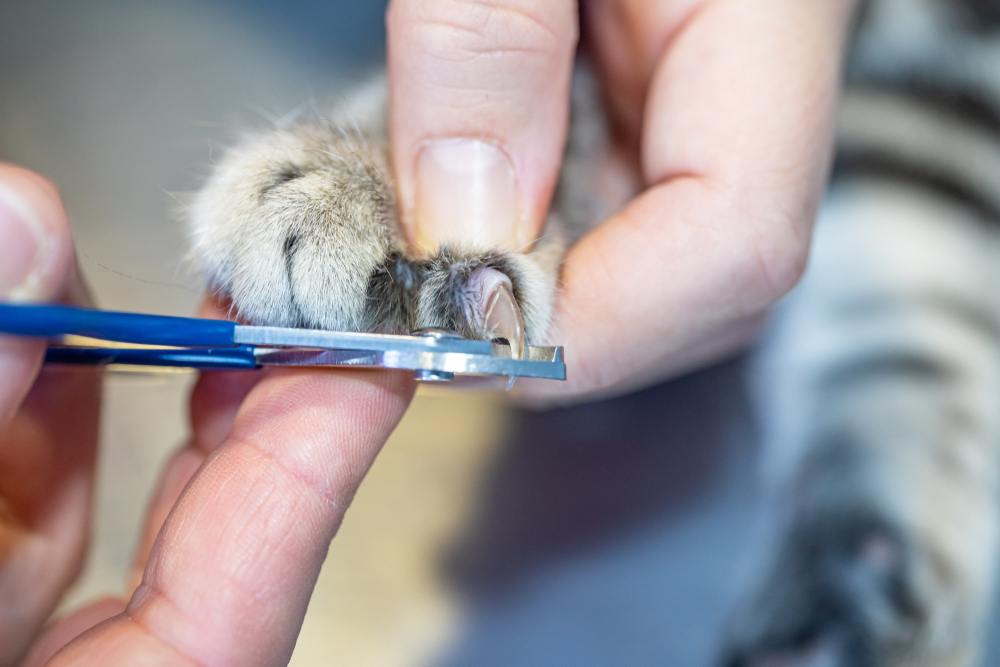
5. Provide Plenty of Enrichment for Your Cat
Environmental enrichment is essential to keep cats comfortable and happy. Whether agitated or bored, providing your cat with more entertainment opportunities may minimize their desire to dig their claws into your furniture.
Some ideas for enrichment opportunities include cat trees, perches, interactive toys, puzzle feeders, catios, olfactory enrichment, and more. You can also provide entertainment by rotating your cat’s toys on a regular basis so they don’t get bored.
You should also consider how much time you spend with your cat. Cats need daily attention and affection, so adding playtime to your daily schedule is a great way to stimulate your cat mentally.
6. Consult a Behavioral Specialist
If you have tried everything and more on this list and still cannot stop your cat from tearing up your leather furniture, you may need to consult a behavioral specialist.
Excessive scratching behaviors may indicate something is wrong, and a behavioral consultant can help you identify the issue. They may also teach you behavioral modification techniques and provide advice for training your cat effectively.
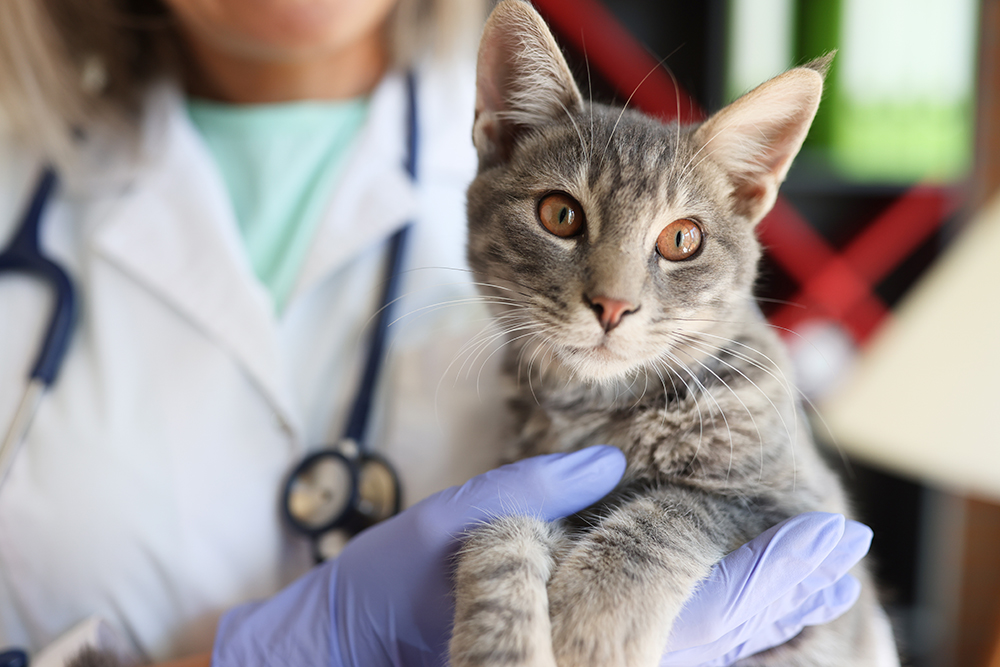

Bad Tactics That You Should Avoid
The tips we’ve listed above will give you plenty of methods to try out, but there are also methods that you should avoid. Below, we will discuss three tactics that should be avoided and why.
1. Declawing Your Cat
Declawing removes the claw and the first toe bone in your cat’s paw. It is a painful, unnecessary amputation that can cause health and behavioral issues to your cat.
Scratching is a necessary behavior, and when cats cannot fully engage in that behavior, they may become anxious and aggressive. Therefore, declawing is not a reasonable solution to stop your cat from clawing your furniture.
2. Yelling or Punishing Your Cat
While it can be frustrating to see that your cat has damaged your leather furniture, yelling or punishing your cat is never the answer. When a cat is punished for a natural behavior, it confuses them and may make them anxious. They can grow afraid of doing normal tasks (such as eating, going potty, and more) and hold off from doing them until you leave.
Instead, focus on positive reinforcement to teach your cat appropriate behaviors. Rewarding desired behaviors is much more effective than punishing unwanted behaviors.
3. Physically Forcing Your Cat to Use a Scratcher
When trying to convince your cat to use their new scratcher, you should never physically force them to try it. Cats do not like being grabbed and forced to do anything, so this approach will only make your pet feel threatened.
They will not form positive associations with the scratcher and may even seek to avoid it in the future, thus thwarting your efforts to teach them to use the scratcher.


Final Thoughts
Teaching your cat to stop scratching your furniture can be challenging, but it isn’t impossible With patience, you can encourage your cat to redirect their attention from your leather furniture to the scratcher you provide.
Focus on methods that make the scratcher look more appealing rather than methods that frighten or harm your cat. A positive redirect will be much more effective in the long term than harsh correction methods, and it may even contribute to a better relationship between you and your cat.
Featured Image Credit: RJ22, Shutterstock
